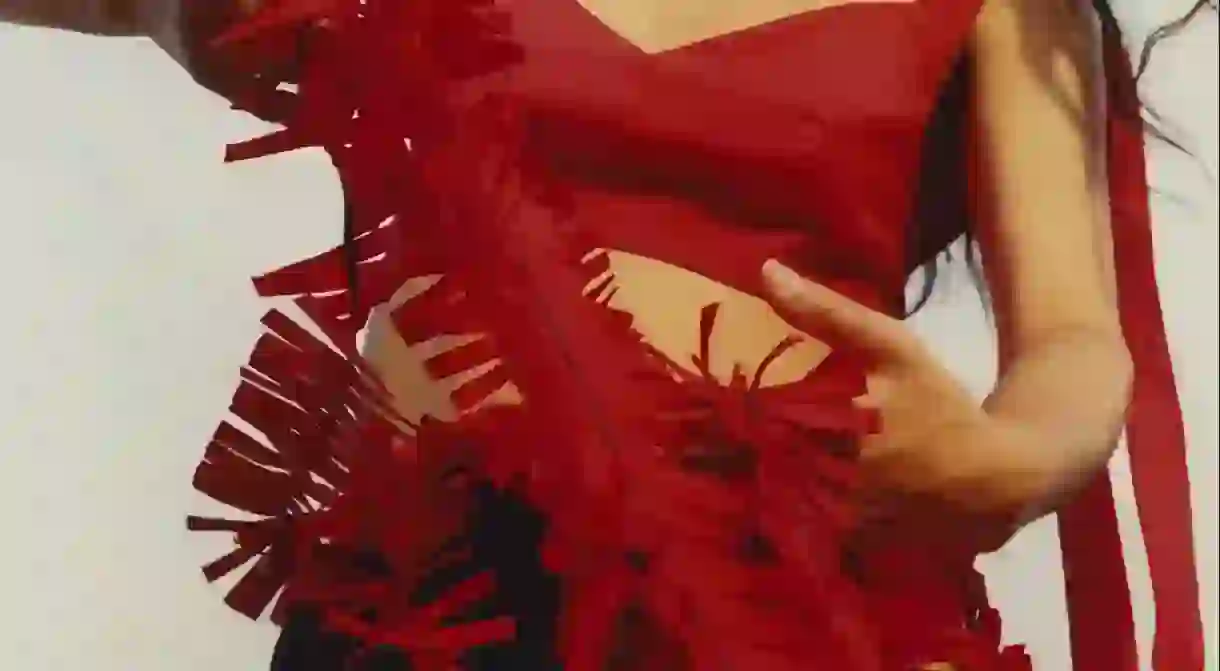Threading Tradition Into Parisian Modernity, Culture Trip Meets Coralie Marabelle

Ahead of Paris Fashion Week, Culture Trip goes Behind the Seams with French designer Coralie Marabelle.
Tactile, evocative and avant-garde, Coralie Marabelle‘s designs tell the story of the modern Parisian woman; the kind of energetic individual who lives creatively and openly, bringing art and life easily together. Having worked with Hermes and Maison Margiela, and in London with Alexander McQueen, Coralie Marabelle decided to launch her eponymous label in 2016.
As she prepared for her SS18 Paris show, Culture Trip caught up with Coralie to talk 70’s DIY vibes, finding inspiration in tradition and the importance of craft in modern French design.
Culture Trip: Hi Coralie! What have you been working on for SS18?
Coralie Marabelle: SS18 is inspired by a denim competition organised in 1974. I was doing some research, and I found this vintage book full of pictures of the winners, and with all the pictures of the garments there’d been embroidering and sewing things on them. It was basically Levis asking people to transform their denim into works of art. So in this book there were plenty of ideas. I love the mood of that generation; young people in the 70’s who really wanted to do things by themselves to create customised pieces, to have something very personal and handmade. It was a way to show their personality and to stand out and be different.

CT: How did this manifest itself in your designs?
CM: I wanted to keep the attitude very chilled and very free, inspired by the period. I wanted a fluid attitude with fluid fabrics and very ‘second skin’. It was about channelling the attitude of these young people who were very open minded about sharing, about community, and about just living together with other people. I work a lot with colours as well, so I used a lot of bright colours and I used some denim to make different pieces, and different coloured denim. I used flowers and lace too, to evoke the sense of the era.
I also did a collaboration with a French artist which was about painting while dancing. We did a project together to develop prints with the colours from my collections. She performed a dance with the brushes and the colours, which referenced the denim contest of 1974 really well. We have this in the collection as well. A lot of it was ensuring that the attitude of this freedom and how people were expressing themselves came through.

CT: Your designs are very tactile. I’m interested in your approach to texture and how that developed?
CM: Fabrics are very often the beginning of my collection. I start my collections by playing with them, and all my work is about exploring and researching far-away cultures, subcultures and forgotten folklores. I try to look for very local, unique and personal traditions, and so in my work you can really see the importance of ‘know how’ and crafty techniques. I try to bring them back to modern day, with my point of view and a more contemporary approach. Then I really start working with my hands and manipulating the fabrics. It’s about making my own fabrics out of fabrics, and developing new fabric textures for each collection.
CT: Do you have a favourite material?
CM: Not really. I like to experiment all the time with new fabrics and new techniques and try to keep searching for new ideas. What you can find in old folklore is amazing techniques, as well as colourful fabrics and playful details. I try to keep this spirt and through my textures bring these local festivities to the wearer.

CT: What have been the folklores and traditions that most influenced your work?
CM: For Autumn/Winter 2017, the collection was inspired by pictures of the Malian photographer Seydou Keita in Bamako in the 1970s. I have always been obsessed by his work and when I saw his exhibition last year in Paris I was overwhelmed, and started working on a new collection. He was a master in the art of setting, using captivating backgrounds with graphic prints. And the people he photographed where always dressed up in amazing dresses with ruffles and tailored suits.
For example, I used the graphic checkerboard print we see often in his pictures to create a black and white patchwork with raw edges, which I designed as a top and pair of trousers. I also developed another technique using padded squares to create a duvet coat with hundreds of small padded squares attached one by one to each other.


For Spring/Summer 2017, I had just come back from a trip to Japan and I got inspired by the paper prayers you find in the temples in Kyoto, as well as vintage Japanese workwear garments. It looked like fur fringes to me, and I started developing different techniques for fringes, at different scales. They also become lines, stripes and belts to tie and knot around the waist or the arm. I also looked at details we see very often in kimonos, and in the way they wrap presents etc.


CT: How does the legacy of Paris affect or mould the way in which you approach fashion design?
CM: I feel free form it, and I really want to keep this freedom. That’s what is going to make my designs different. I find it very inspiring to be in Paris, in one of the biggest cities for fashion, because lots of things are happening. I kind of really loved London when I lived there because it’s so creative; French people are more conservative, and creatively I think Paris is maybe not the best place but for me it’s not a problem because I travel and I find inspiration everywhere. I really don’t want to follow a trend from last season. I want to do my own thing.













